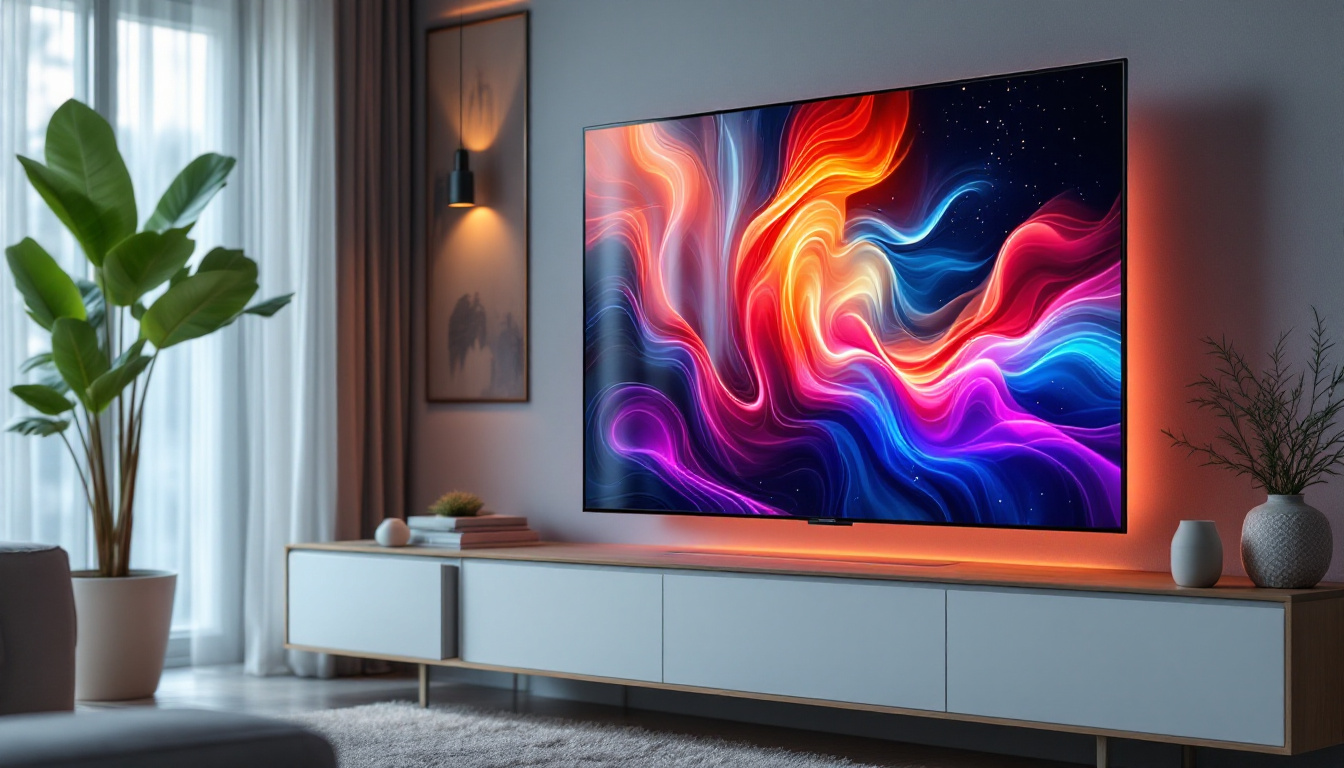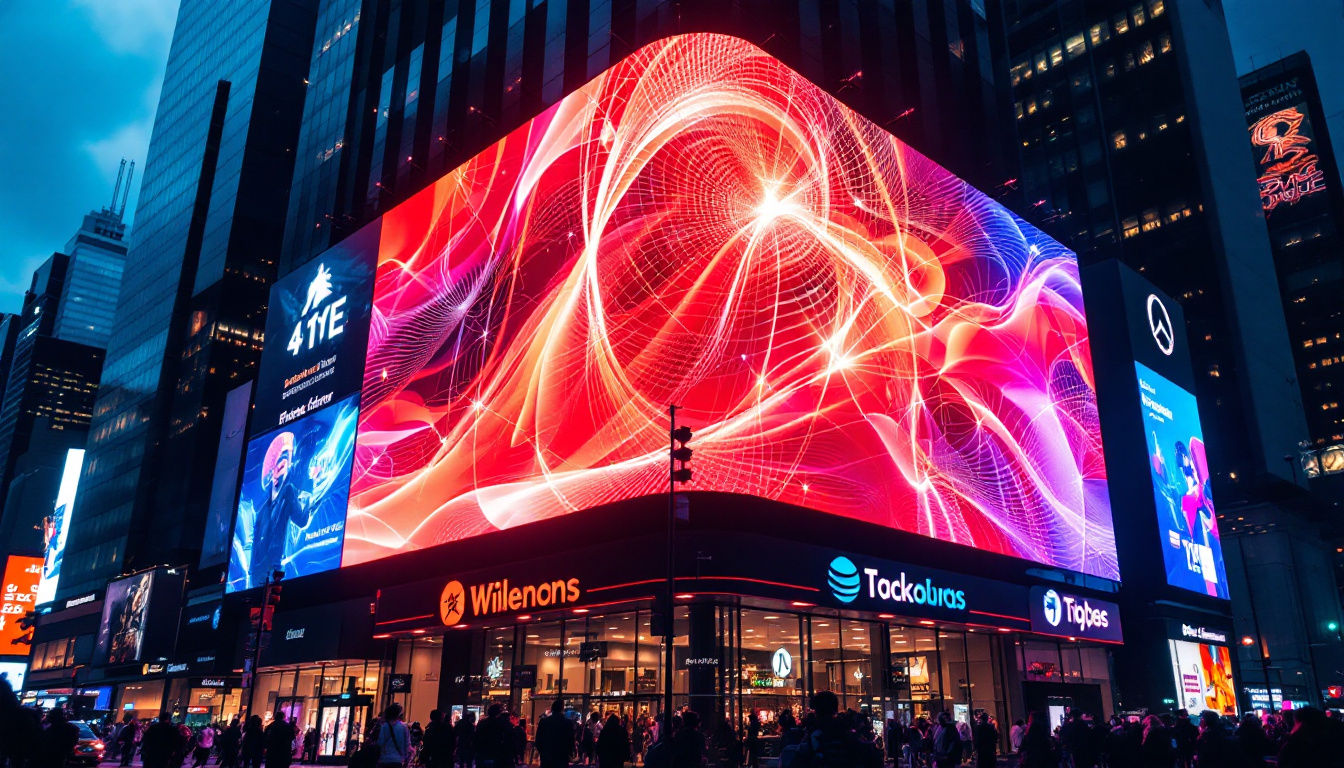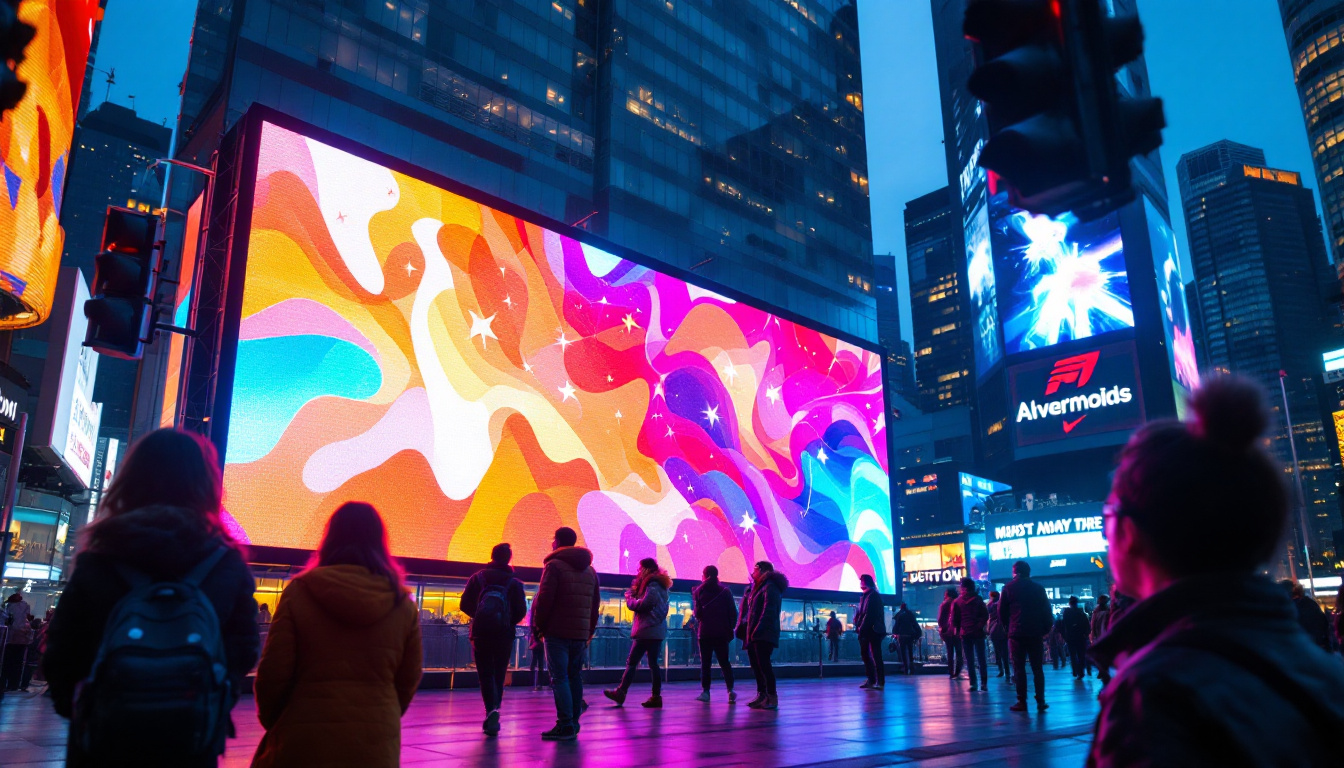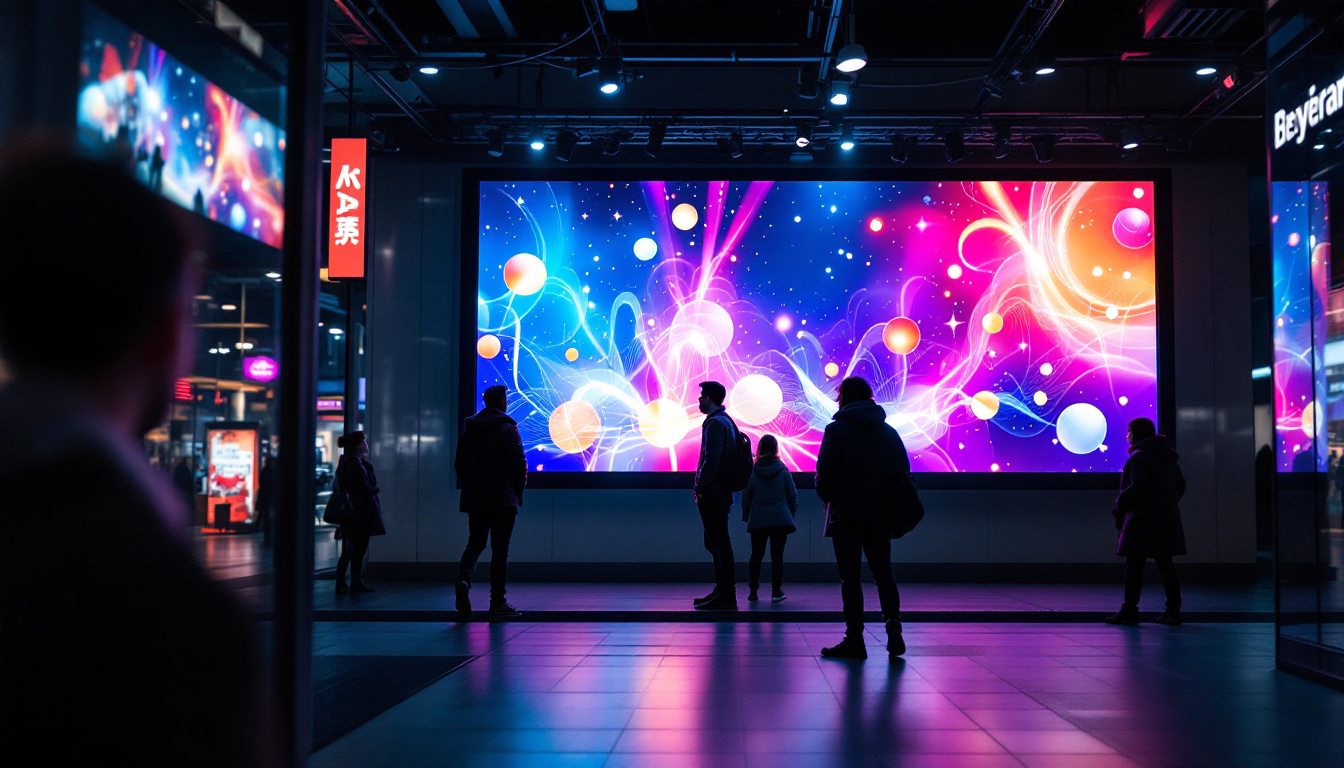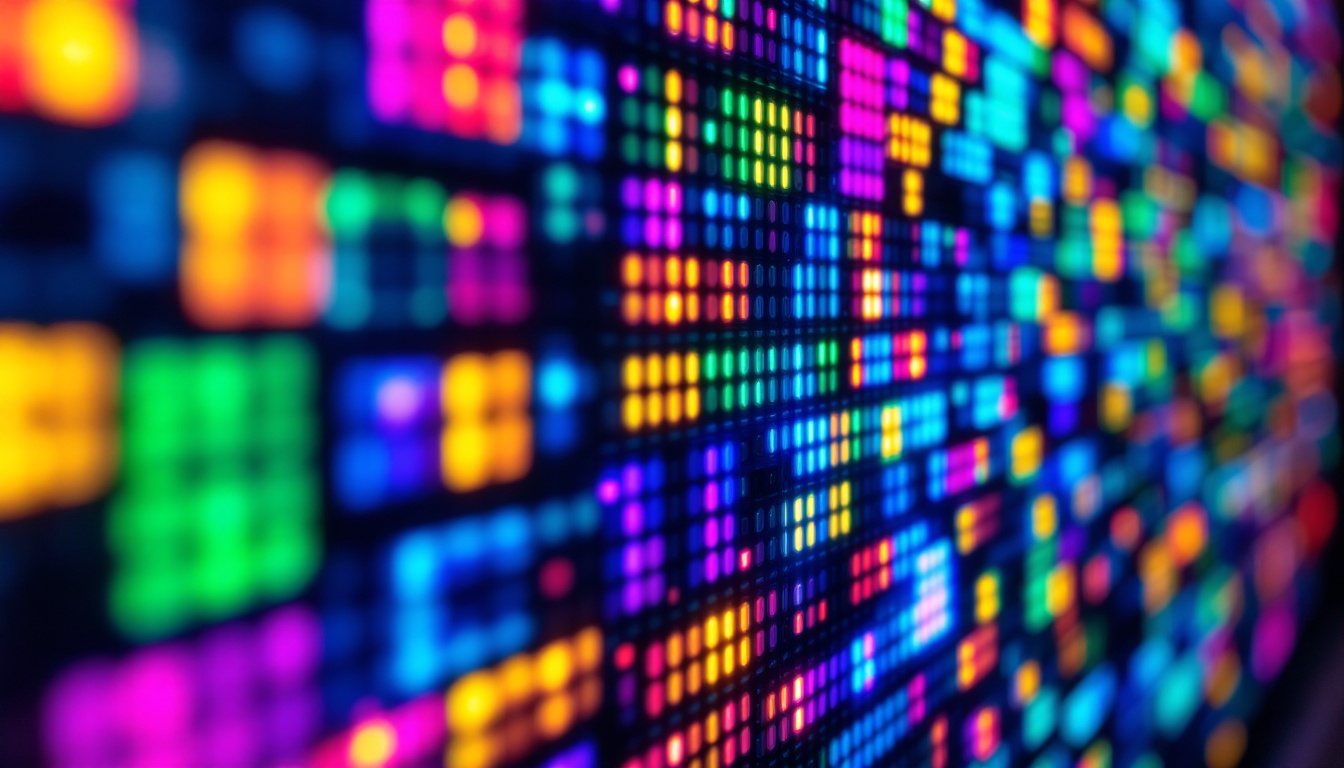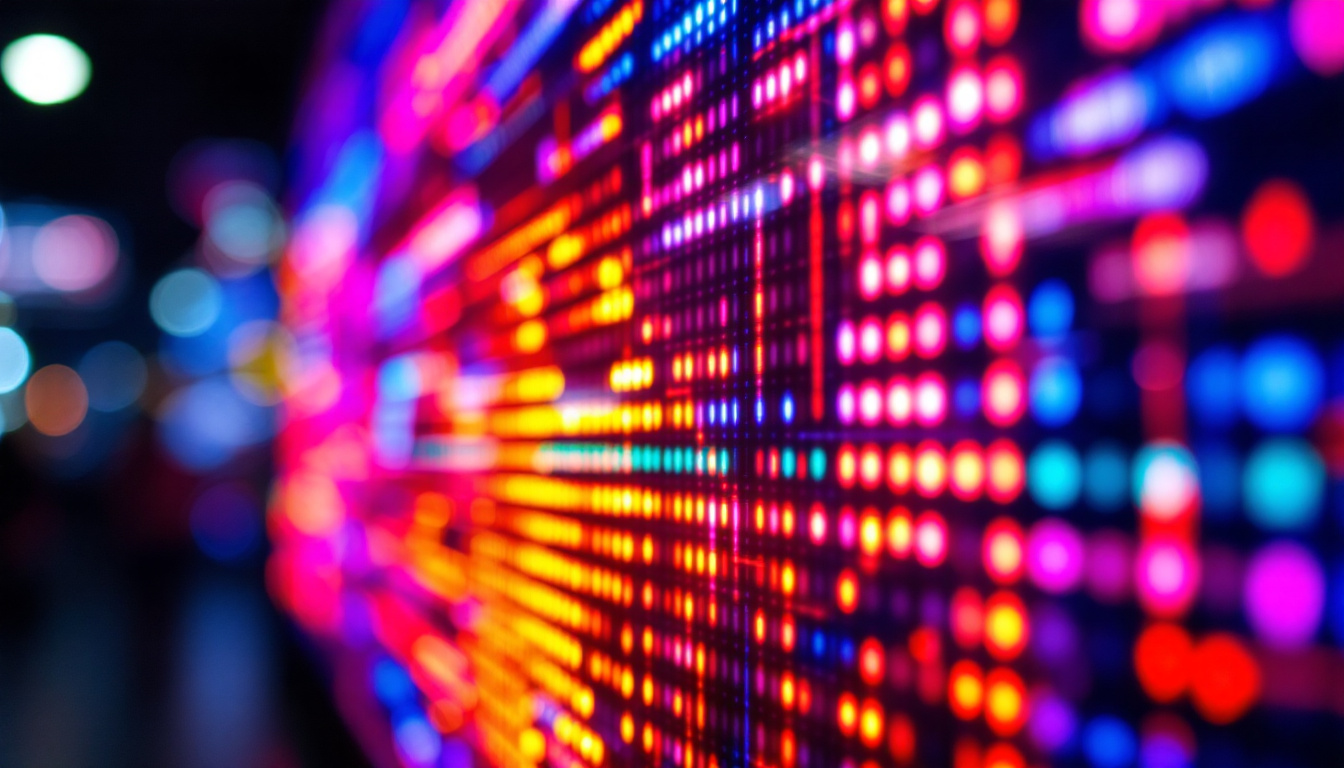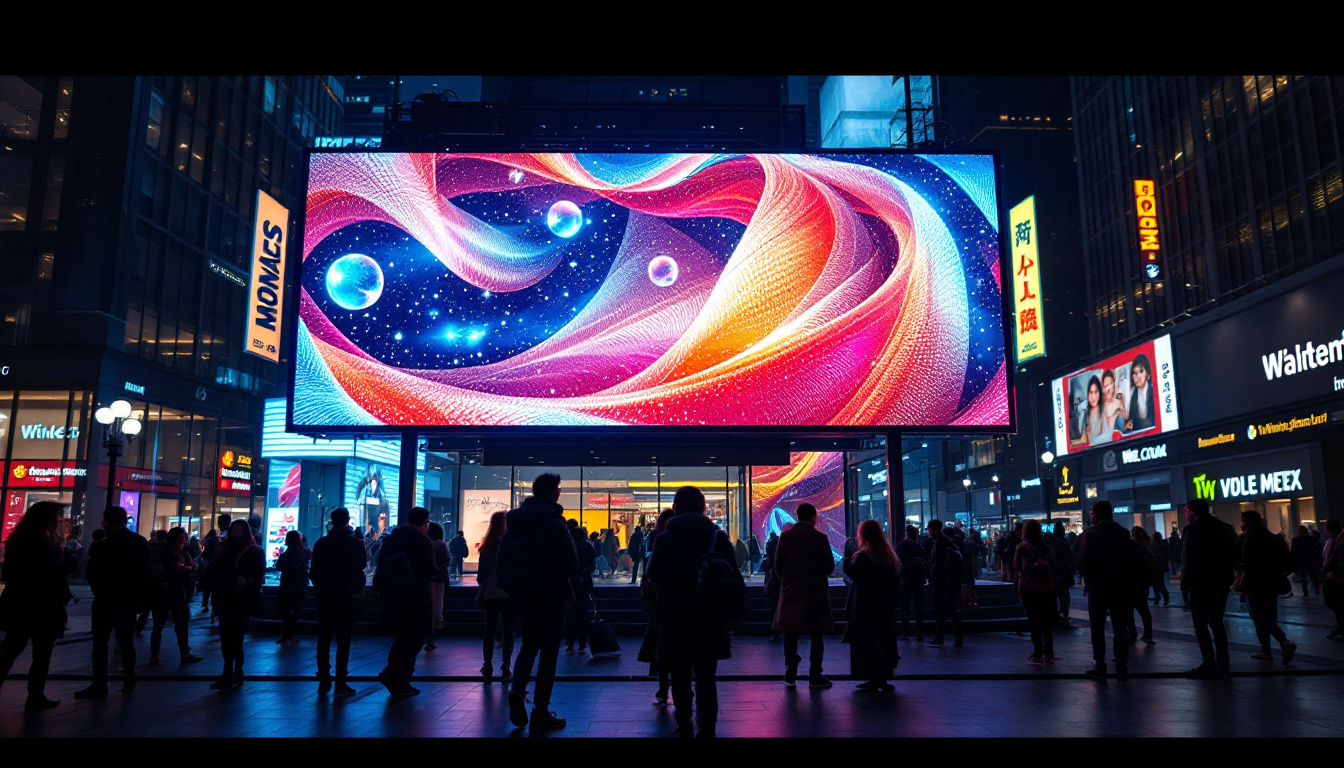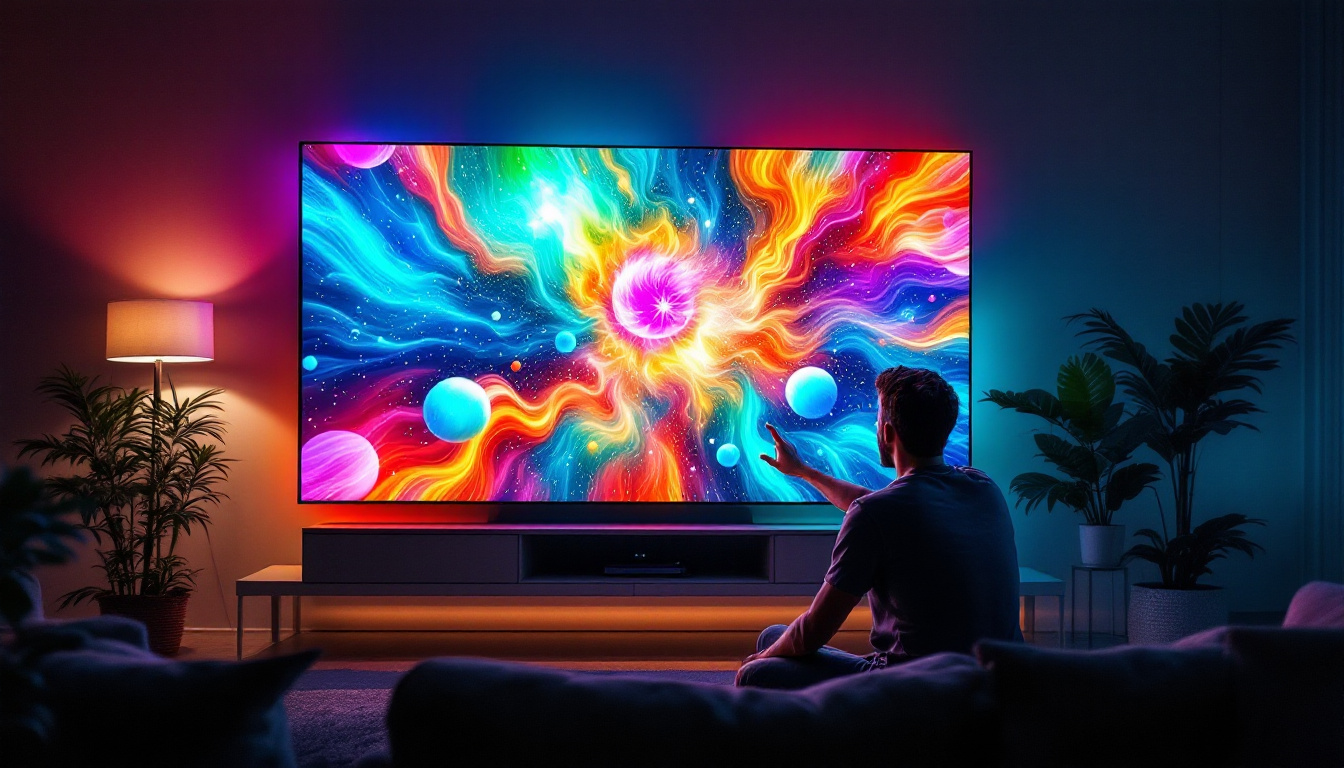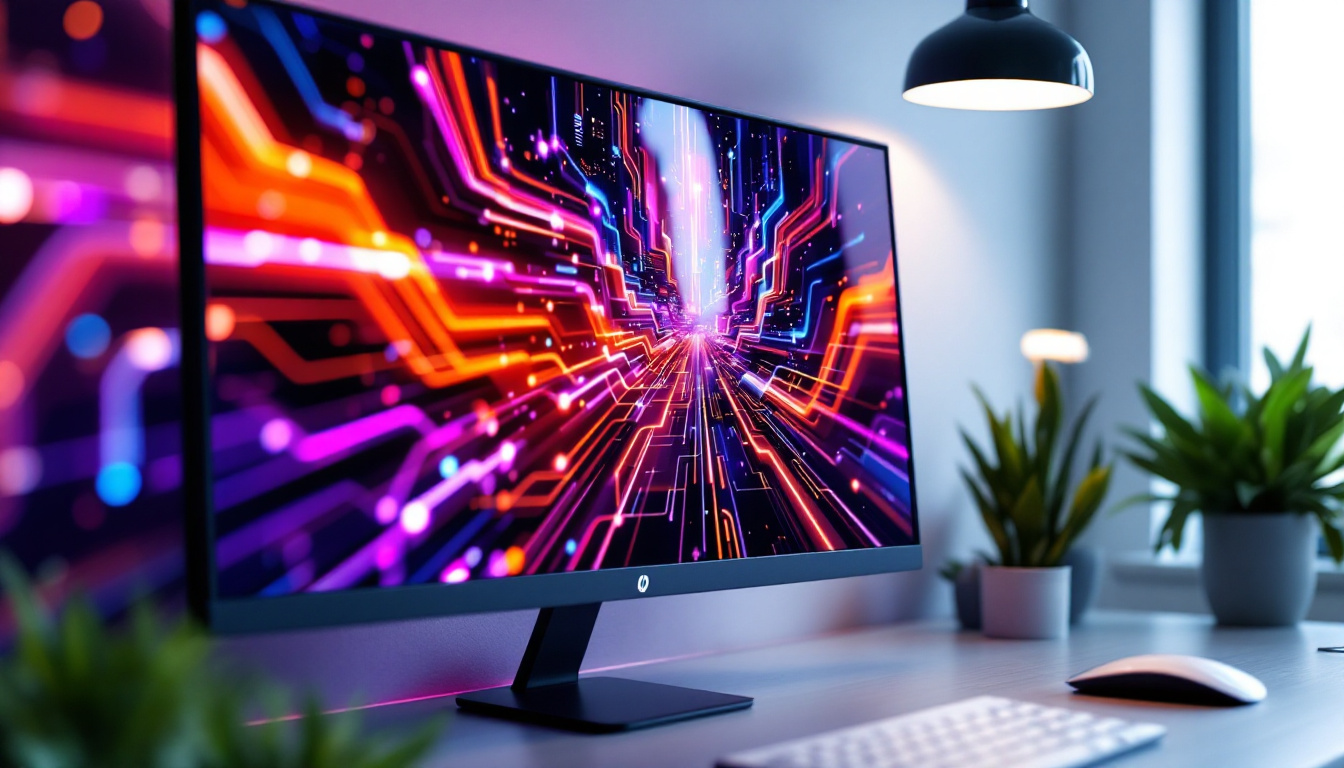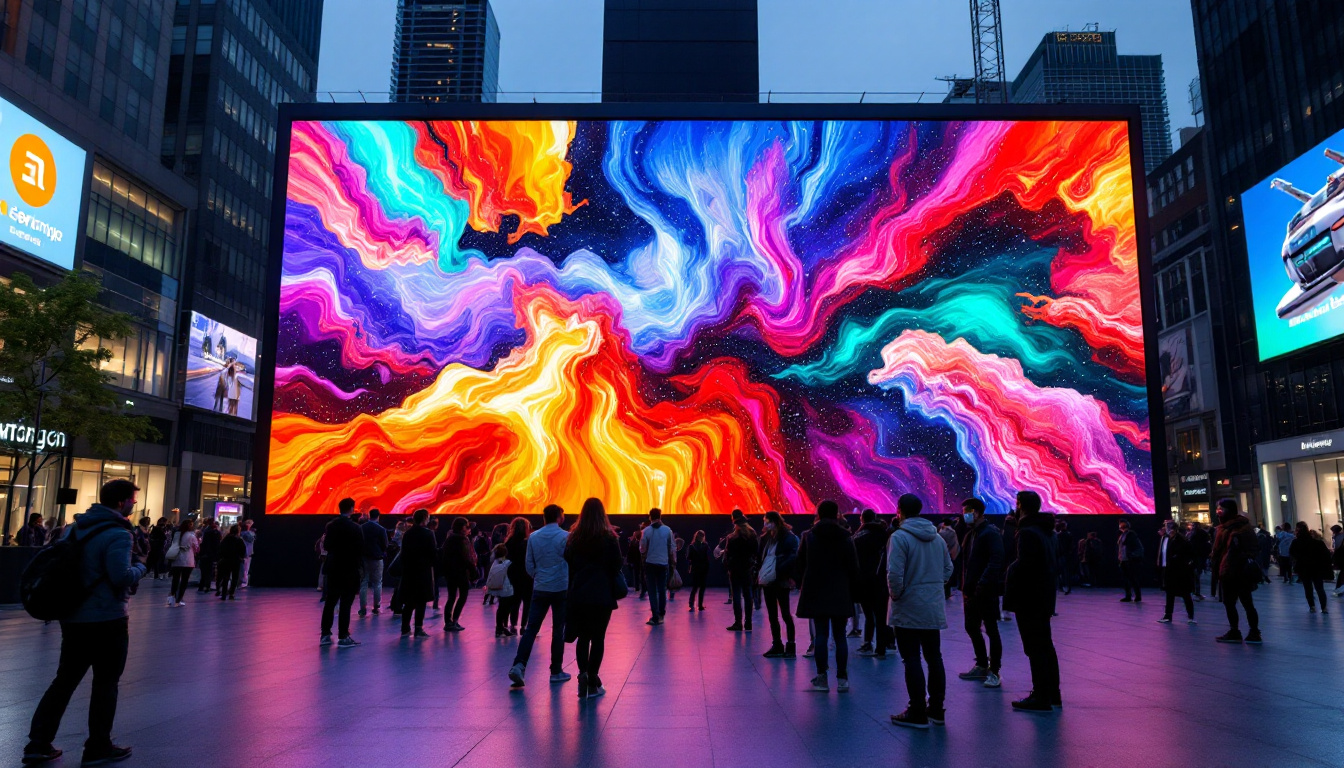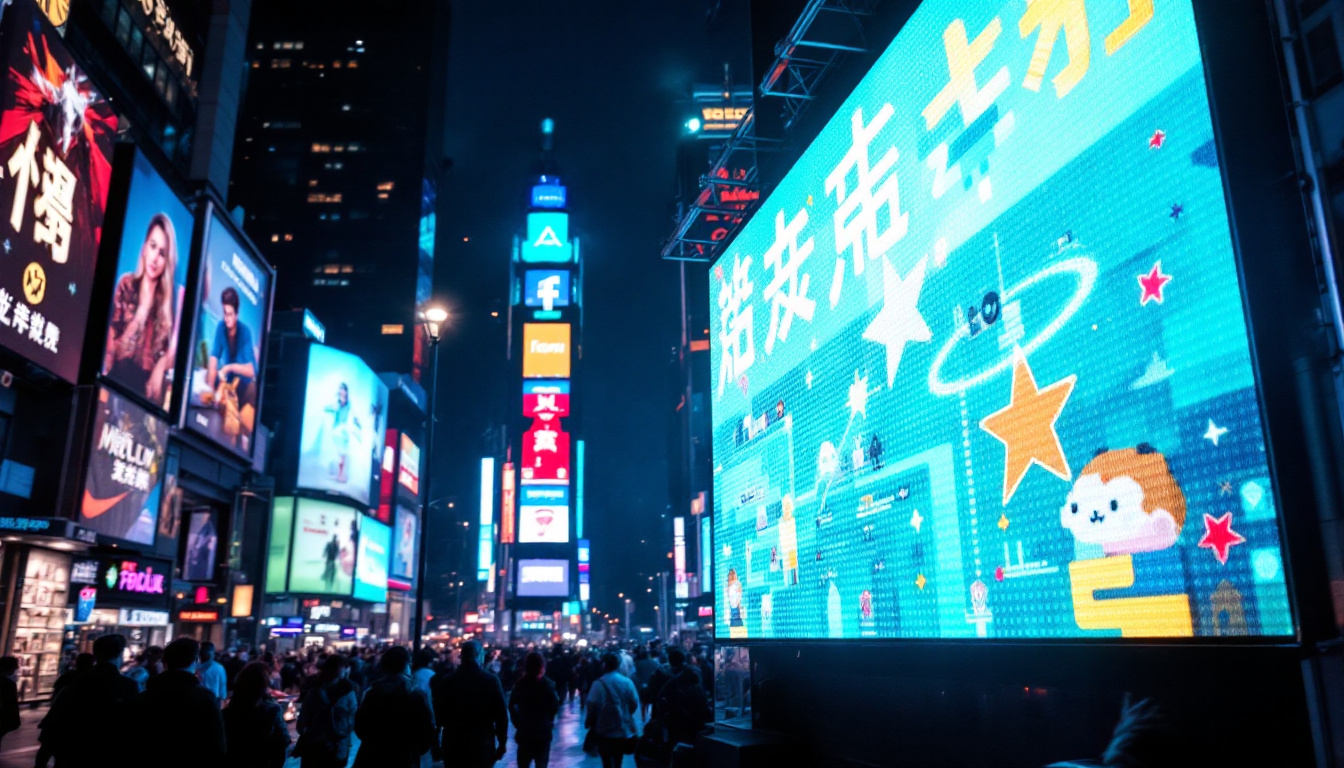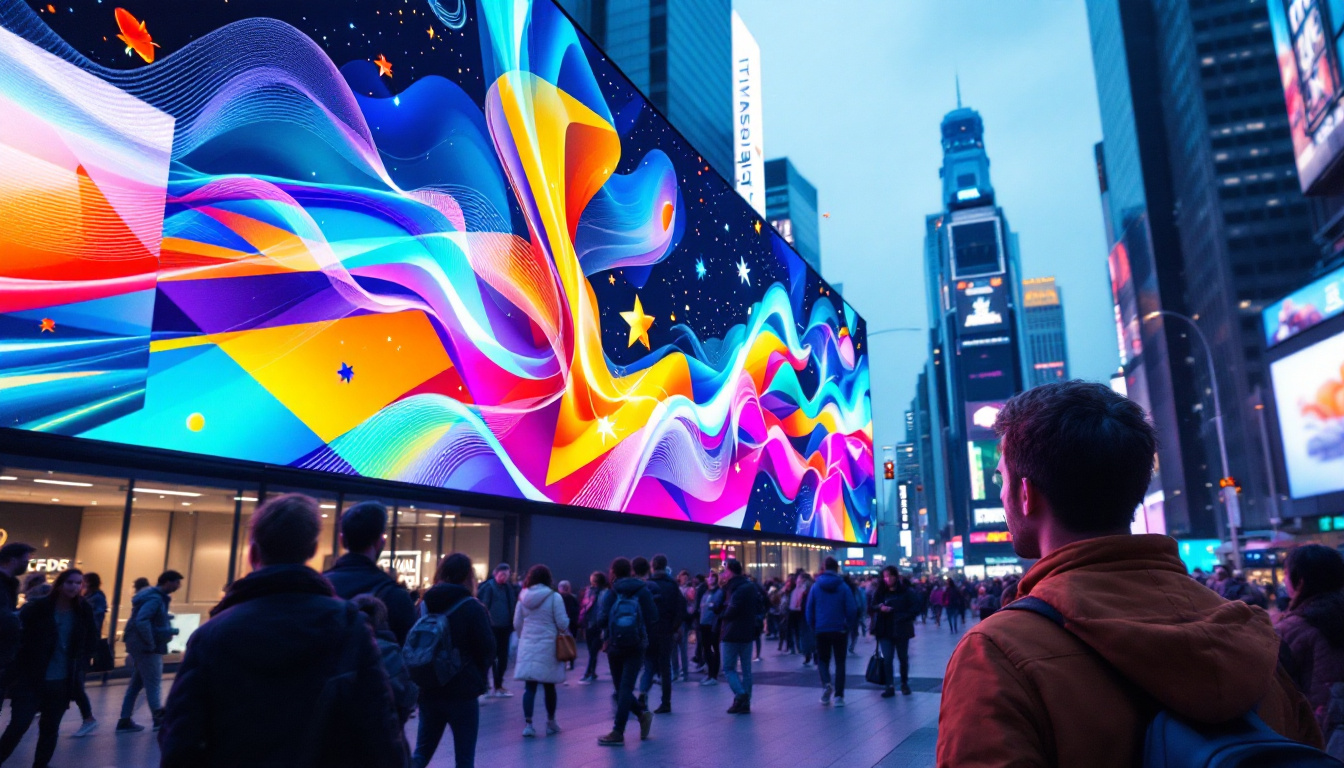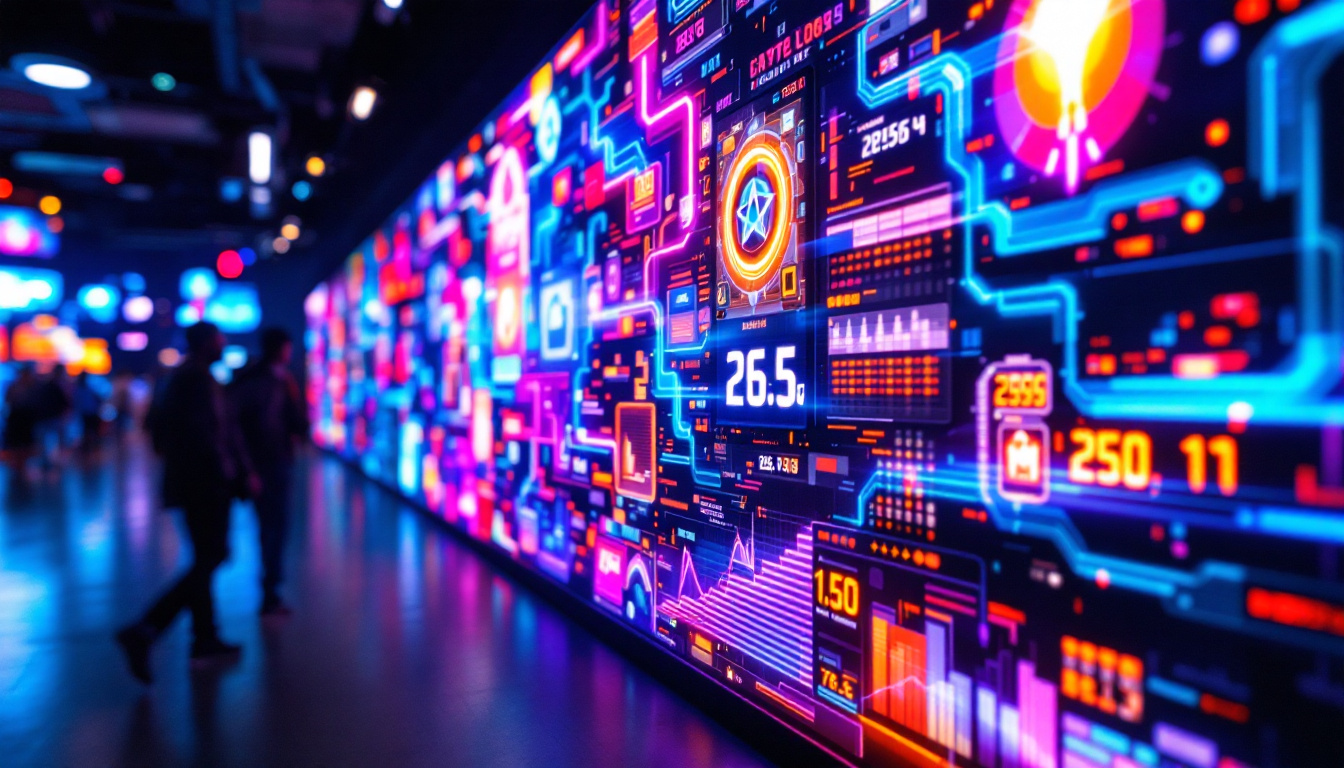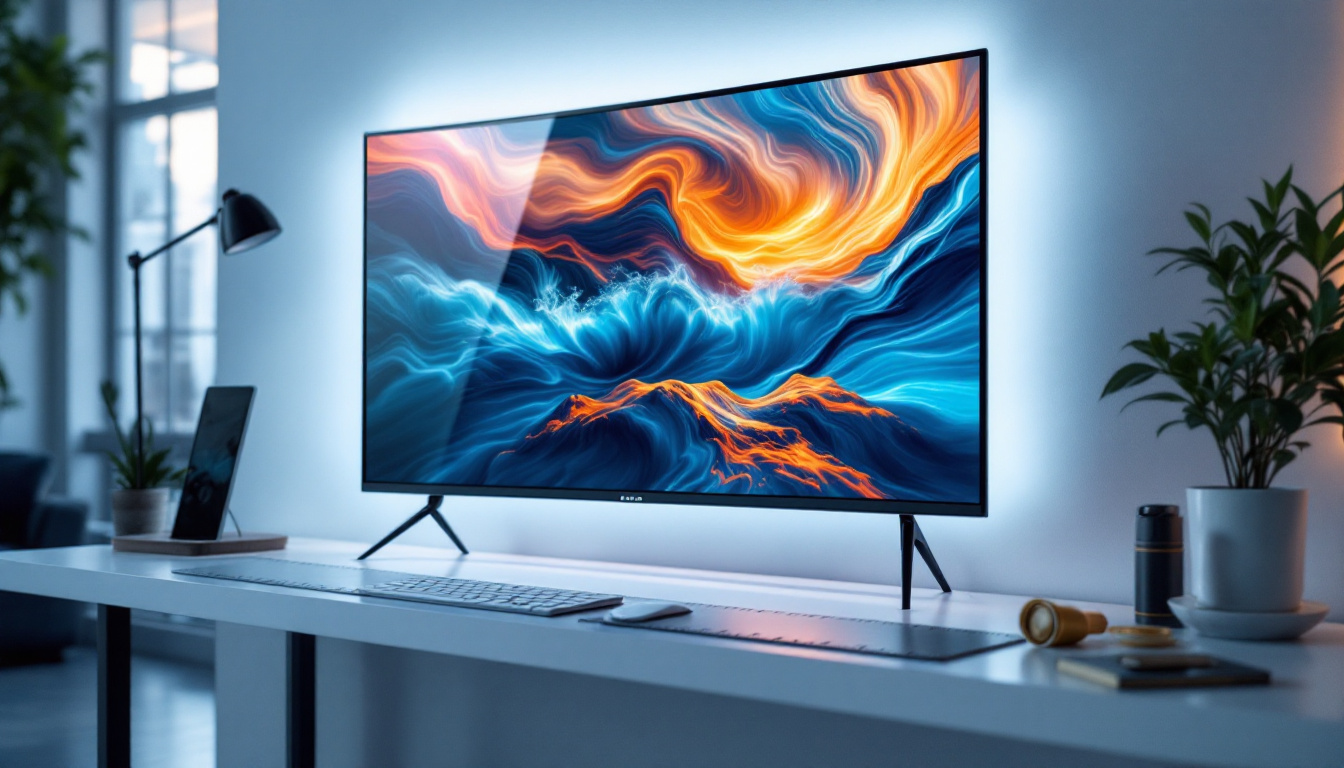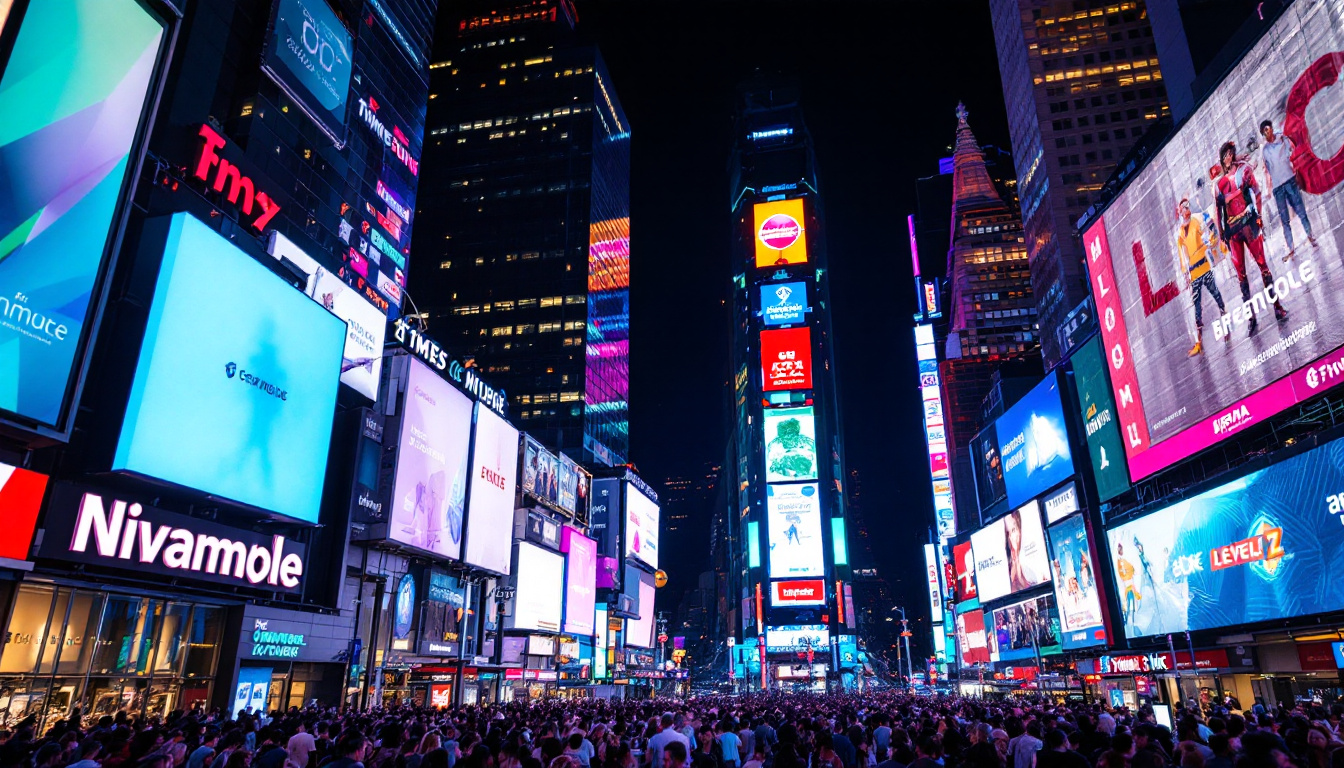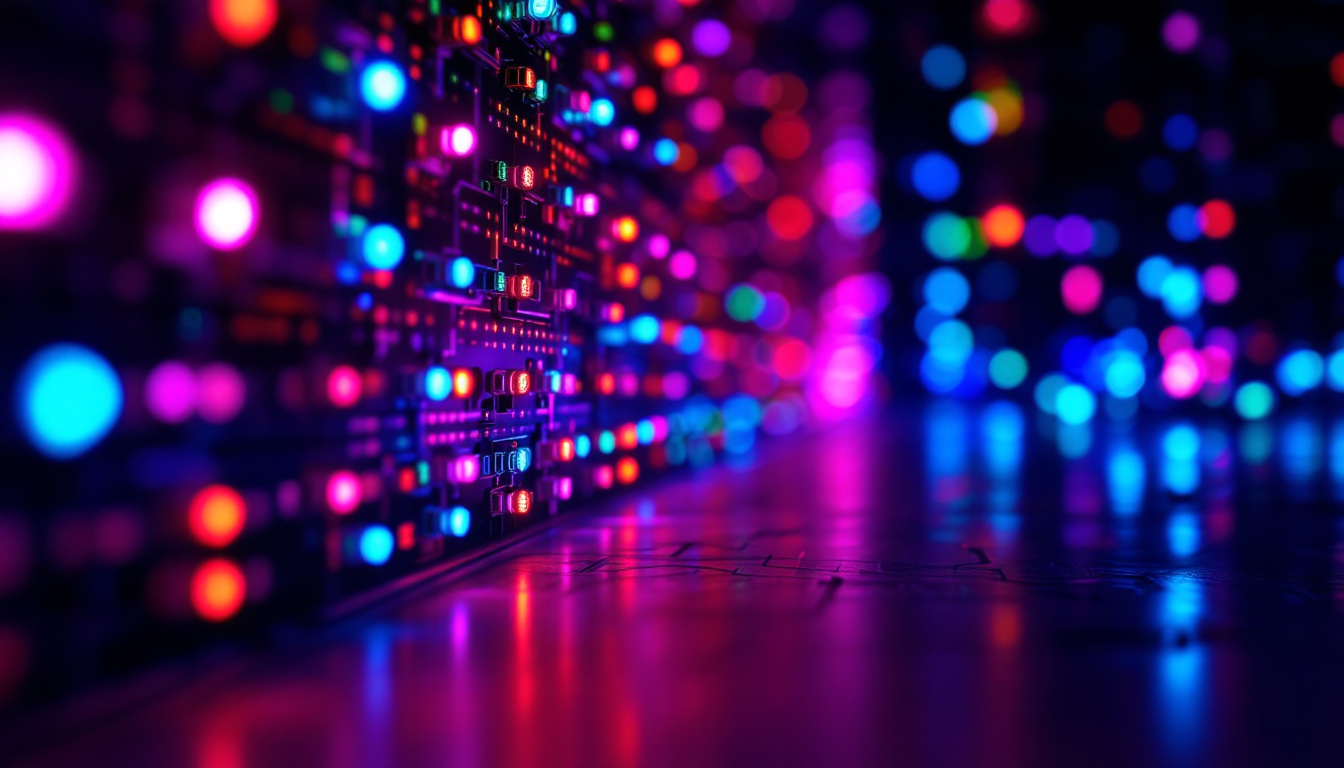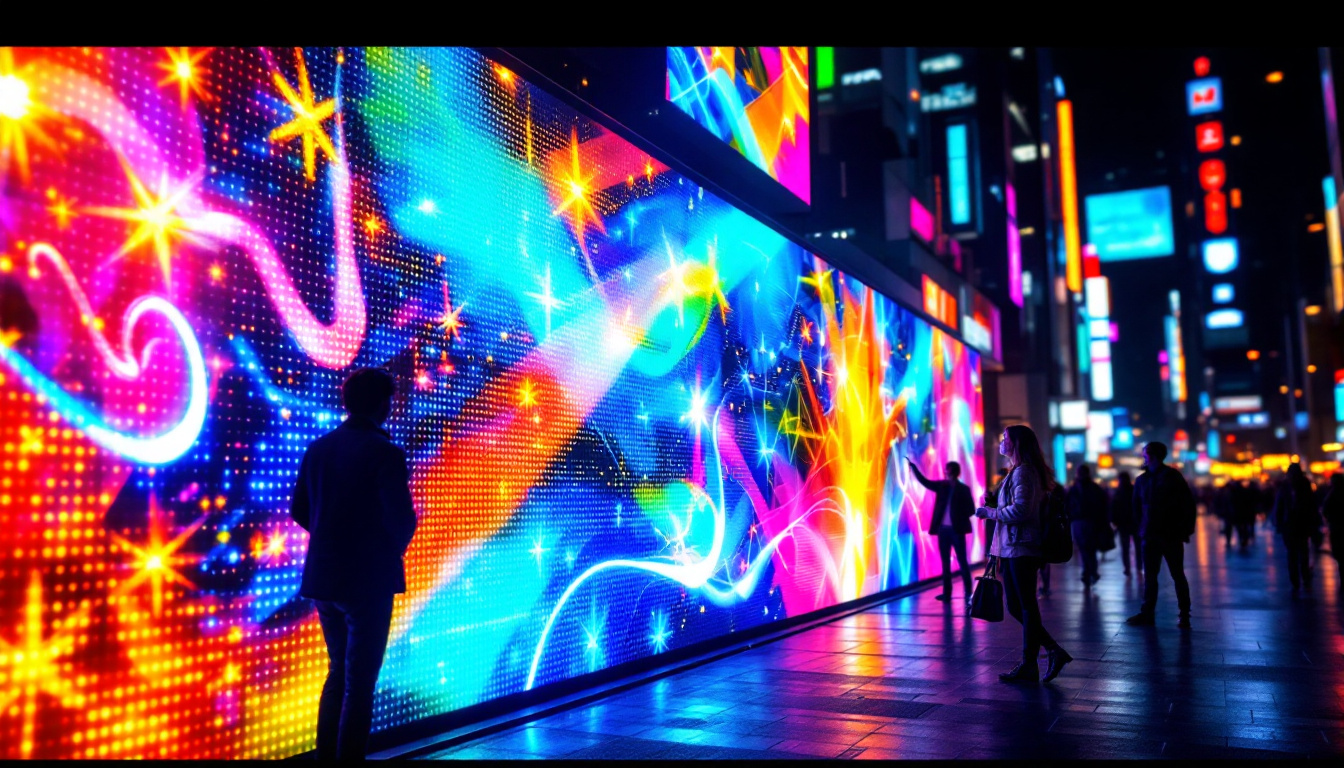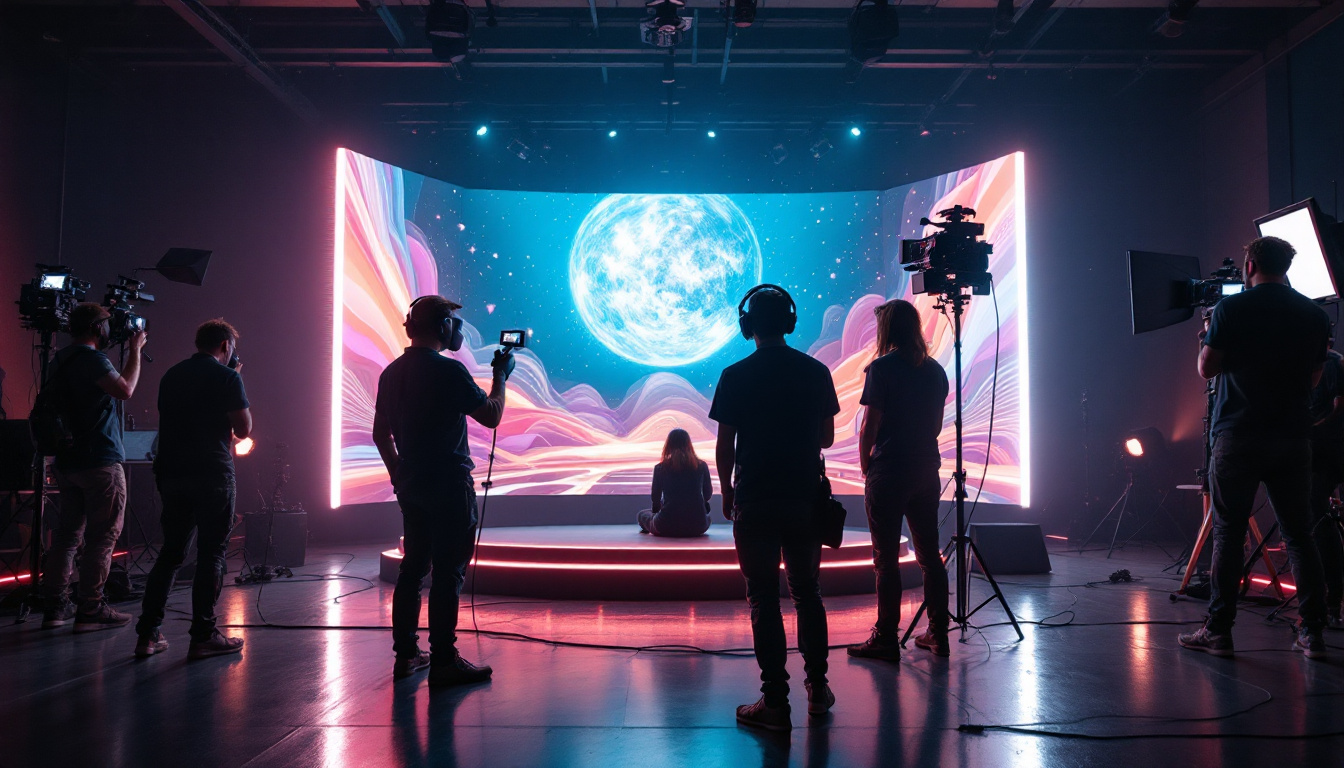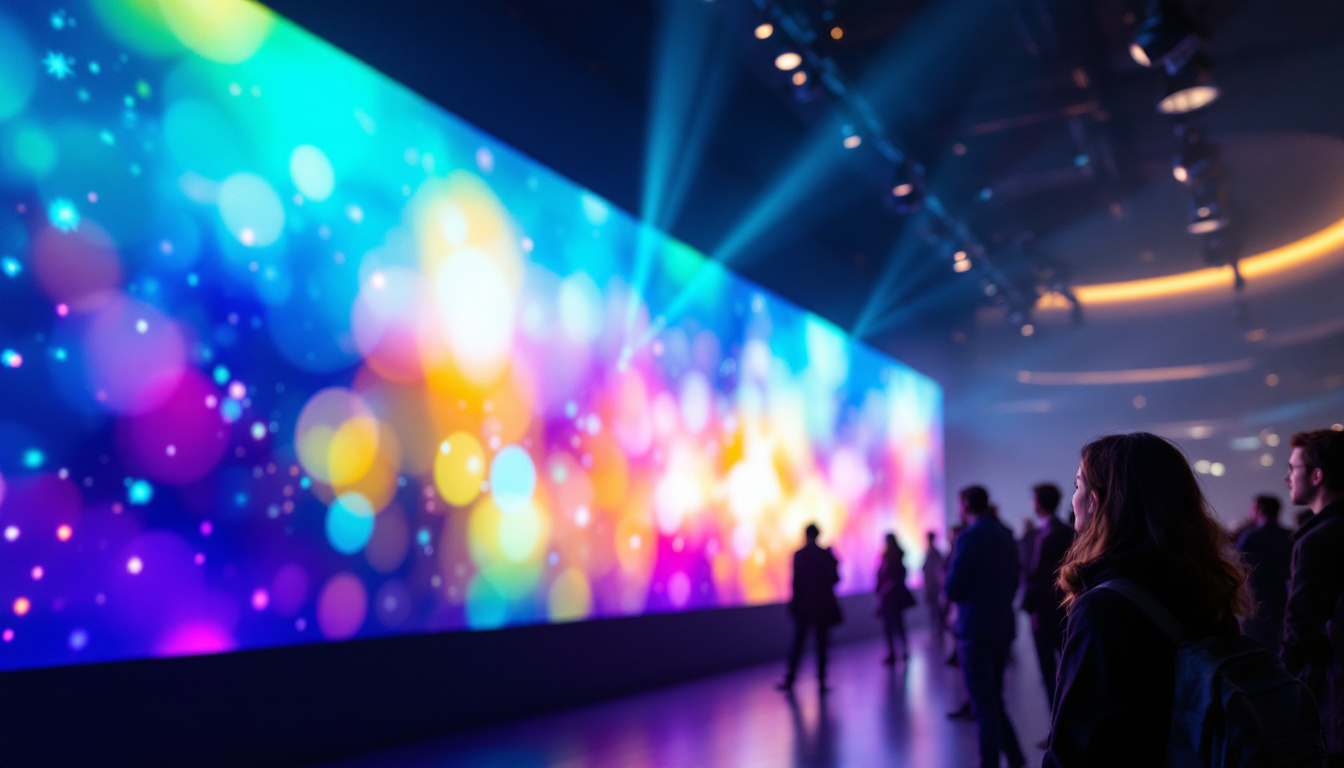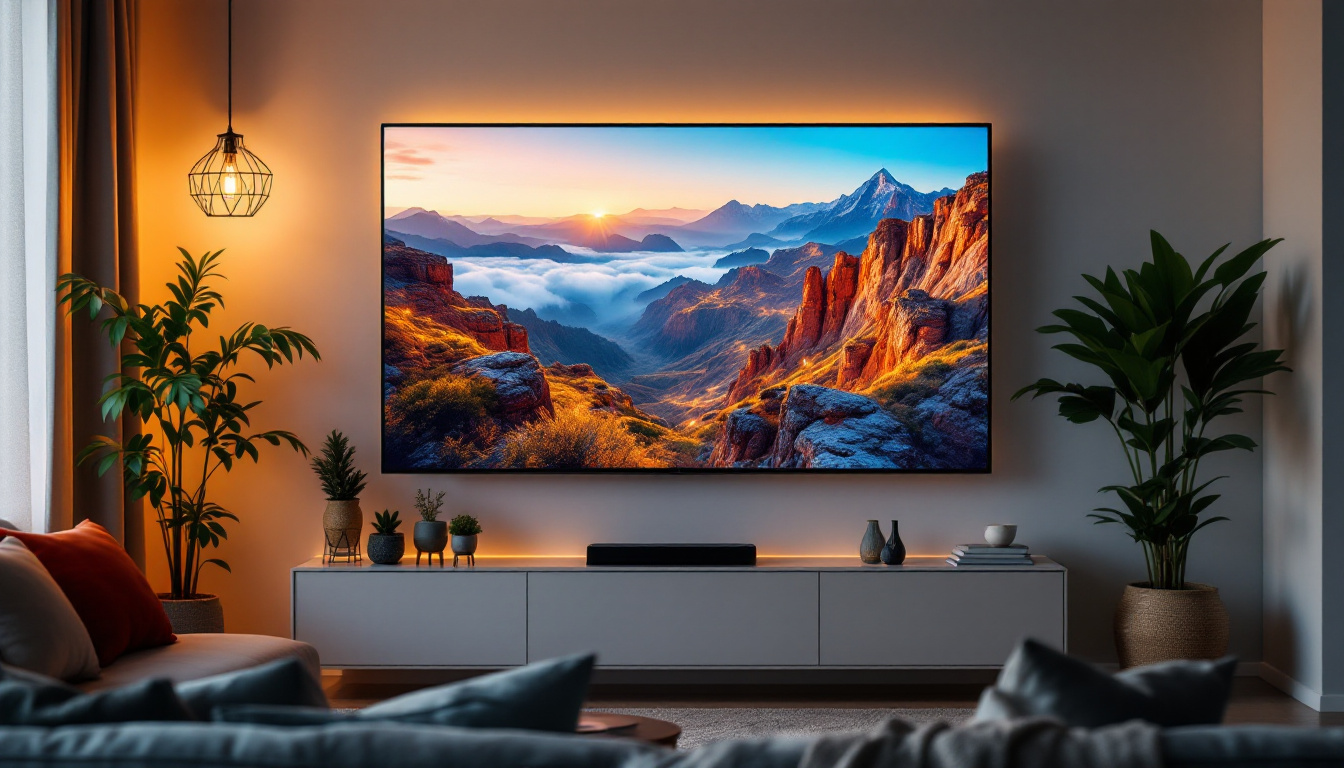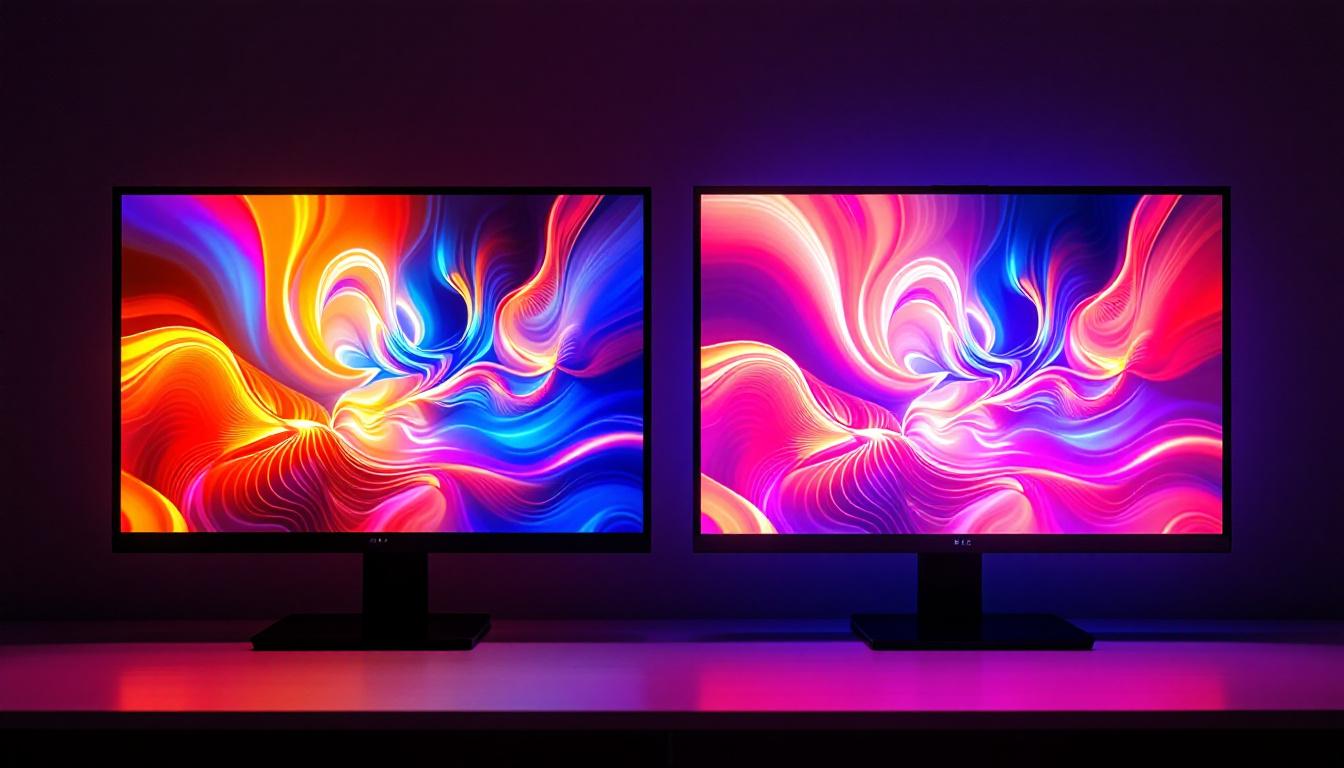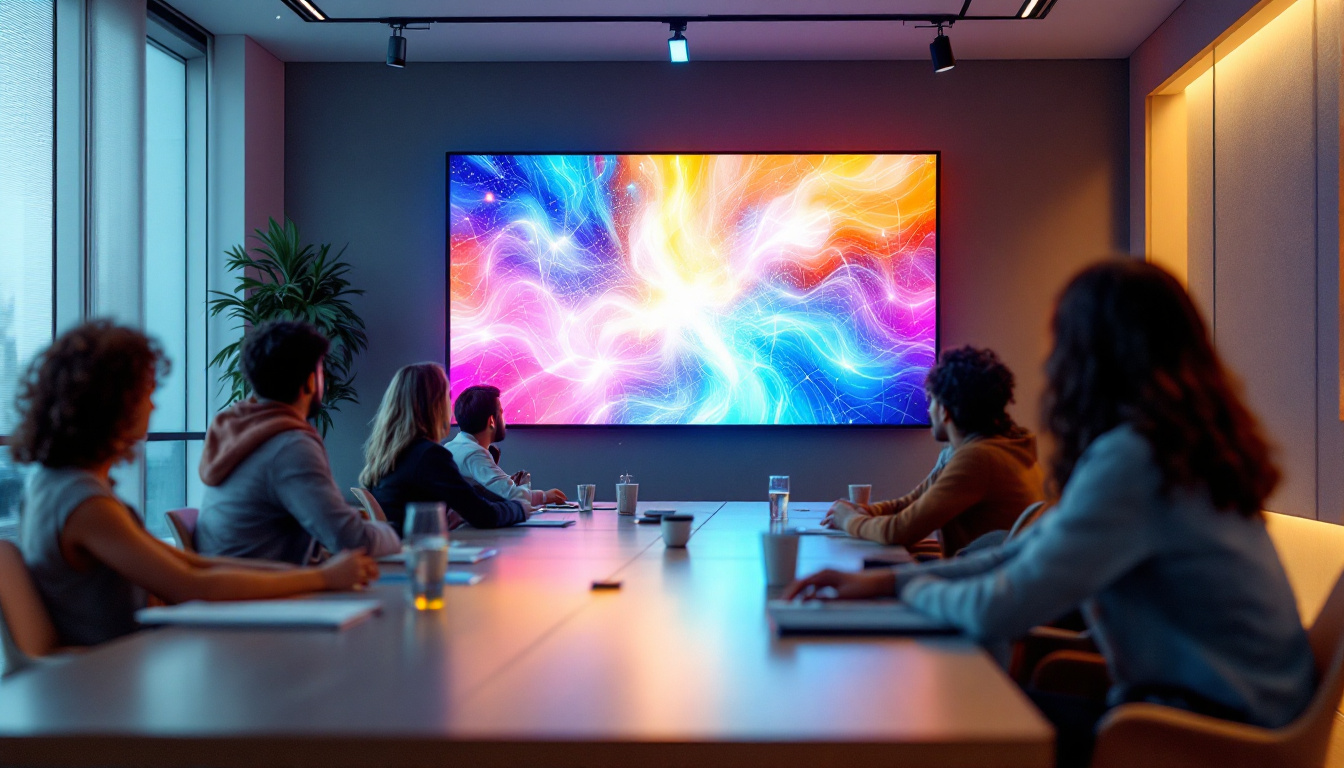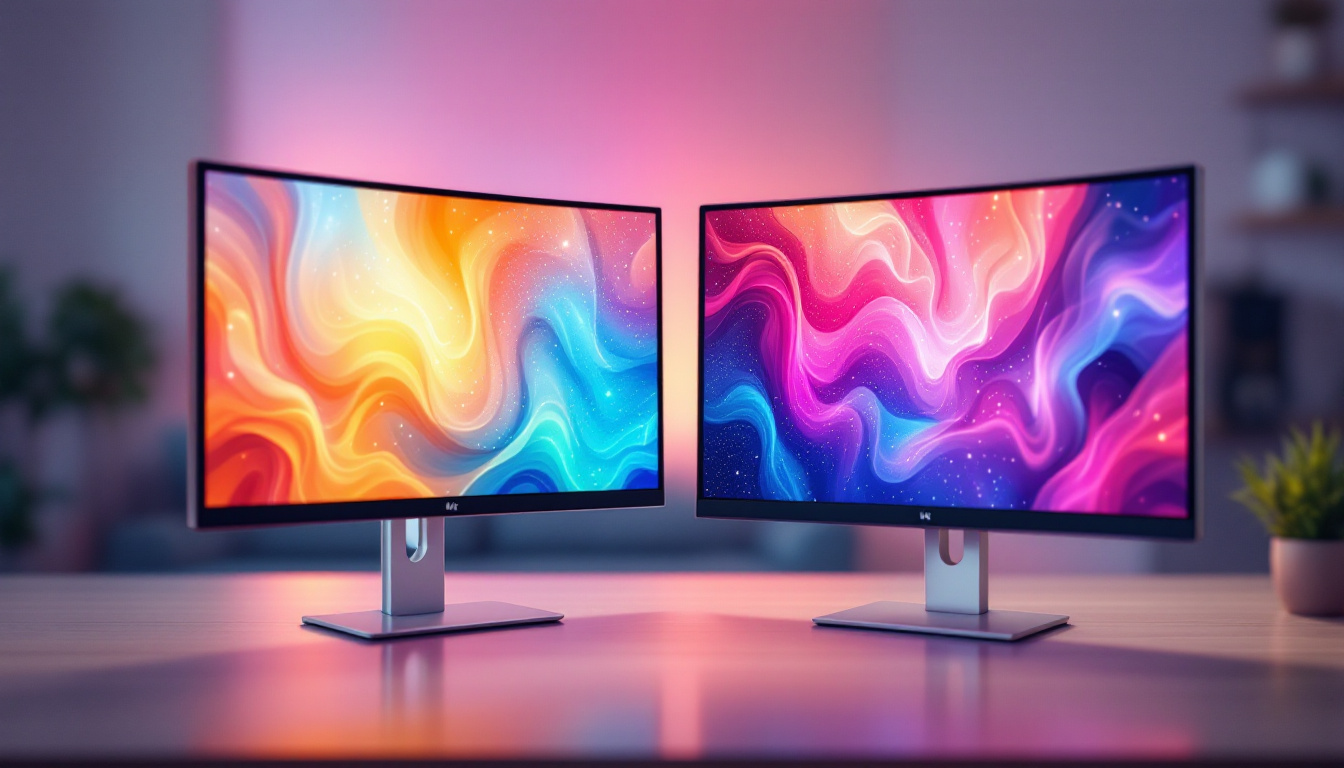Display Technology TV: LED Display Explained
In the realm of modern television technology, LED displays have emerged as a dominant force, captivating audiences with their vibrant colors and stunning clarity. As consumers become increasingly discerning about their viewing experiences, understanding the intricacies of LED displays becomes essential. This article delves into the fundamentals of LED display technology, exploring its advantages, variations, and the future of this remarkable technology.
Understanding LED Technology
Light Emitting Diodes (LEDs) are semiconductor devices that emit light when an electric current passes through them. This technology has revolutionized the way images are displayed on screens, offering significant improvements over traditional display methods. LED displays utilize a matrix of tiny LEDs to produce images, resulting in enhanced brightness, contrast, and color accuracy.
The Basics of LED Displays
At the core of LED display technology is the concept of backlighting. Unlike traditional LCD screens that rely on fluorescent lights, LED displays use LEDs as their light source. This allows for greater control over brightness levels and energy consumption. The arrangement of LEDs can vary, leading to different types of LED displays, each with its unique characteristics. Additionally, the use of LEDs contributes to a longer lifespan for the displays, often exceeding 50,000 hours of use, which is significantly longer than traditional display technologies.
Types of LED Displays
There are primarily two types of LED displays: Edge-lit and Direct-lit. Edge-lit displays have LEDs positioned along the edges of the screen, allowing for a thinner profile. In contrast, Direct-lit displays feature LEDs placed directly behind the screen, providing more uniform brightness and better color accuracy. Each type has its pros and cons, catering to different consumer preferences. Moreover, advancements in technology have led to the development of OLED (Organic LED) displays, which offer even greater contrast ratios and flexibility in design, making them a popular choice for high-end televisions and smartphones.
How LED Displays Work
LED displays work by modulating the intensity of light emitted by the diodes to create images. Each pixel on the screen is made up of sub-pixels—typically red, green, and blue (RGB)—which combine to produce a full spectrum of colors. By adjusting the brightness of these sub-pixels, LED displays can achieve remarkable color depth and sharpness, making them ideal for everything from movies to video games. Furthermore, the rapid response time of LEDs allows for smooth motion rendering, which is particularly beneficial for fast-paced content, such as sports broadcasts and action films. This capability has made LED technology the preferred choice for both professional and consumer-grade displays.
Advantages of LED Displays
LED displays have garnered immense popularity due to a myriad of advantages they offer over traditional display technologies. From energy efficiency to superior image quality, the benefits are compelling.
Energy Efficiency
One of the standout features of LED displays is their energy efficiency. Compared to older technologies like CRT and plasma, LED displays consume significantly less power. This not only translates to lower electricity bills but also contributes to a reduced carbon footprint, making them an environmentally friendly choice. Furthermore, many LED displays come equipped with features such as automatic brightness adjustment, which optimizes power consumption based on ambient light conditions, further enhancing their energy-saving capabilities.
Image Quality
LED displays excel in image quality, providing deeper blacks, brighter whites, and a wider color gamut. The ability to achieve high contrast ratios enhances the viewing experience, especially in dark scenes. Additionally, advancements in technology have led to features like High Dynamic Range (HDR), which further elevates the visual experience by expanding the range of colors and brightness levels. The precision of LED technology also allows for finer pixel densities, resulting in sharper images and smoother motion, making them ideal for gaming and fast-paced action films.
Longevity and Durability
LED displays are known for their longevity and durability. With a lifespan that can exceed 50,000 hours, these displays outlast many traditional options. This durability is particularly advantageous for consumers who want a long-term investment in their home entertainment systems. Additionally, LED technology is less susceptible to burn-in issues that can plague plasma screens, ensuring that the display maintains its quality over time. The robust construction of LED displays also makes them more resistant to physical damage, making them suitable for a variety of environments, from homes to public spaces and commercial settings.
Versatility in Applications
Another significant advantage of LED displays is their versatility in applications. They are used in a wide range of settings, from residential televisions to large outdoor billboards and digital signage. This adaptability means that whether you’re looking to enhance your home theater experience or attract customers with eye-catching advertisements, LED technology can meet those needs effectively. Furthermore, the modular nature of some LED displays allows for creative installations, enabling designers to create unique shapes and sizes that can fit any space, making them a favorite among architects and interior designers.
Low Maintenance Requirements
LED displays also boast low maintenance requirements, which is a crucial factor for both home users and businesses alike. Unlike traditional display technologies that may require frequent replacements or repairs, LED displays are designed to operate reliably over long periods with minimal intervention. Their solid-state design means fewer components are prone to failure, reducing the need for costly maintenance services. This reliability not only saves time but also contributes to a more seamless user experience, allowing viewers to enjoy their content without interruptions or concerns about display performance.
LED Display Variations
While LED technology is a significant leap forward, it is important to note that there are various variations within the LED category itself. Each variation caters to specific needs and preferences, making it essential for consumers to understand their options.
OLED vs. QLED
Two prominent variations of LED technology are OLED (Organic Light Emitting Diode) and QLED (Quantum Dot LED). OLED displays are known for their ability to produce true blacks and exceptional color accuracy. This is due to the fact that each pixel emits its own light, allowing for complete control over brightness. On the other hand, QLED displays utilize quantum dots to enhance color and brightness, resulting in vivid images. While both technologies have their merits, the choice often comes down to personal preference and viewing habits.
Mini-LED Technology
Mini-LED is another exciting development in the LED space. This technology uses smaller LEDs to provide more precise control over local dimming zones, resulting in improved contrast and brightness. Mini-LED displays can achieve deeper blacks and brighter highlights, making them a strong contender in the premium display market.
MicroLED Technology
MicroLED technology takes the benefits of LED displays to the next level. By using microscopic LEDs, MicroLED displays offer self-emissive capabilities similar to OLED, but without the risk of burn-in. This technology promises to deliver exceptional brightness, color accuracy, and longevity, making it a potential game-changer in the industry.
Choosing the Right LED Display
When it comes to selecting the right LED display, several factors should be considered. Understanding personal preferences, viewing environments, and specific use cases can help consumers make informed decisions.
Screen Size and Resolution
Screen size and resolution play a crucial role in the overall viewing experience. Larger screens with higher resolutions, such as 4K or 8K, provide more detail and immersive experiences. However, the ideal size will depend on the viewing distance and the layout of the room. It is essential to strike a balance between size and resolution to ensure optimal viewing.
Viewing Environment
The environment in which the display will be used can significantly impact the choice of technology. For bright rooms, displays with higher brightness levels and anti-reflective coatings are preferable. Conversely, for darker environments, features like local dimming and HDR capabilities can enhance the viewing experience.
Budget Considerations
Budget is often a deciding factor when purchasing a new display. LED technology offers a wide range of options, from affordable models to high-end displays. Consumers should evaluate their needs and consider what features are most important to them, ensuring they find a display that fits both their requirements and their budget.
The Future of LED Display Technology
As technology continues to evolve, the future of LED displays looks promising. Innovations are constantly being developed, pushing the boundaries of what is possible in display technology.
Advancements in Display Resolution
With the advent of 8K resolution, the demand for higher pixel densities is on the rise. As content creators begin to produce more high-resolution content, displays will need to keep pace. This trend is likely to lead to even sharper images and more immersive viewing experiences.
Integration with Smart Technology
The integration of LED displays with smart technology is another exciting development. As homes become smarter, the ability to control displays through voice commands, mobile apps, and smart home systems is becoming increasingly common. This seamless integration enhances user convenience and opens up new possibilities for entertainment.
Environmental Sustainability
As consumers become more environmentally conscious, manufacturers are focusing on creating sustainable display technologies. This includes using recyclable materials, reducing energy consumption, and implementing eco-friendly production processes. The future of LED displays will likely prioritize sustainability without compromising performance.
Conclusion
LED display technology has transformed the way audiences experience visual content. With its myriad advantages, including energy efficiency, superior image quality, and durability, it is no wonder that LED displays have become the standard in modern televisions. As technology continues to advance, consumers can expect even more exciting developments in the world of LED displays. Understanding the nuances of this technology empowers consumers to make informed choices, ensuring they select the perfect display for their viewing needs.
Whether considering a new television for a home theater setup or simply upgrading an existing screen, the insights provided in this article serve as a valuable resource. As the landscape of display technology evolves, staying informed will enhance the viewing experience and ensure that consumers make the most of their investment.
Explore Cutting-Edge LED Displays with LumenMatrix
Ready to elevate your visual experience with the latest in LED display technology? Discover the innovative solutions offered by LumenMatrix, a leader in crafting state-of-the-art LED displays that bring your content to life. From the immersive Indoor LED Wall Display to the dynamic Outdoor LED Wall Display, and from the mobile versatility of Vehicle LED Displays to the sleek design of LED Poster Displays, LumenMatrix has a solution tailored to your needs. Experience the future of visual communication with our LED Sports Displays, interactive Floor LED Displays, and the customizable options of Custom LED Displays. Embrace the convenience of All-in-One LED Displays and the aesthetic appeal of LED Transparent Displays. Check out LumenMatrix LED Display Solutions today and transform the way you share your message with the world.

